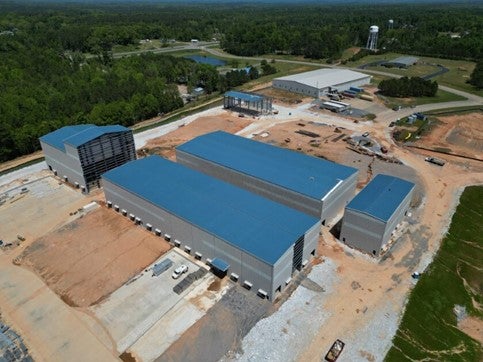
Tariffs are essentially taxes or duties imposed by a government on goods and services imported into, and exported out of, a country.
As China imposes new export restrictions on certain grades of graphite, a critical material in electric vehicle (EV) batteries, the US faces increasing pressure to secure its supply chain. These tariffs come at a pivotal moment for the US, just as federal incentives and private investments are driving a nationwide push to expand EV production and battery manufacturing.
Graphite is essential for lithium-ion battery anodes, and China currently dominates both mining and refining of graphite, controlling over 60% of global supply and more than 90% of processing capacity. With export controls now in place, US automakers and battery manufacturers are confronting a potential shortfall of this vital material, threatening production schedules and cost structures.
Navigate the shifting tariff landscape with real-time data and market-leading analysis. Request a free demo of GlobalData’s Strategic Intelligence here.
Short-term consequences
In the immediate future, the tariffs are likely to create bottlenecks and drive up prices for battery-grade graphite. Companies such as Tesla, GM, and Ford may be forced to navigate higher input costs, which could ripple through to vehicle pricing and manufacturing timeliness. With many EV battery plants under construction or scaling up in the US, this supply pressure could complicate efforts to meet federal targets for EV adoption. EVs already face affordability challenges for many consumers, and any rise in production costs could slow down adoption, particularly in the mid and entry-level market segments.
Automakers such as GM, Ford, and Stellantis report significant margin pressure. GM is targeting 30% of tariff costs through capacity reallocation and pricing strategies. Battery producers and retailers are diversifying supply. For example, Batteries Plus cut its China sourcing from 32% in 2018 to 4%, adding the US, Vietnam, and Malaysia as suppliers. Graphite producers outside China, like Syrah Resources and Nouveau Monde, saw stock surges up to 22–26% due to new US duties.
How the US government may respond
In response, the US Commerce Department imposed a 93.5% tariff on anode-grade graphite imports from China, effective on materials with a minimum carbon purity of 90%, whether synthetic, natural, or blended. This case was initiated in December 2024 by the American Active Anode Material Producers, a coalition of US graphite companies, including Anovion, Syrah, Novonic, and Epsilon. This action has escalated US-China trade tensions, particularly in the critical minerals sector that is essential for electric vehicles. While US producers may gain domestic advantages from this tariff, graphite-dependent industries, especially EV battery manufacturers, are advocating for exemptions and seeking alternative sources.
The US is also intensifying efforts on multiple fronts to secure a more resilient supply of graphite. Domestic mining and processing projects in states like Alaska and Alabama are receiving increased attention and investment to extract and process natural graphite. While these initiatives are promising, permitting and development timelines indicate that significant supplies may still be several years away.
To diversify sourcing and reduce reliance on China, the US is deepening trade partnerships with graphite-producing countries such as Canada, Australia, and Mozambique. These collaborations align with broader clean energy trade policies.
Navigate the shifting tariff landscape with real-time data and market-leading analysis. Request a free demo of GlobalData’s Strategic Intelligence here.







